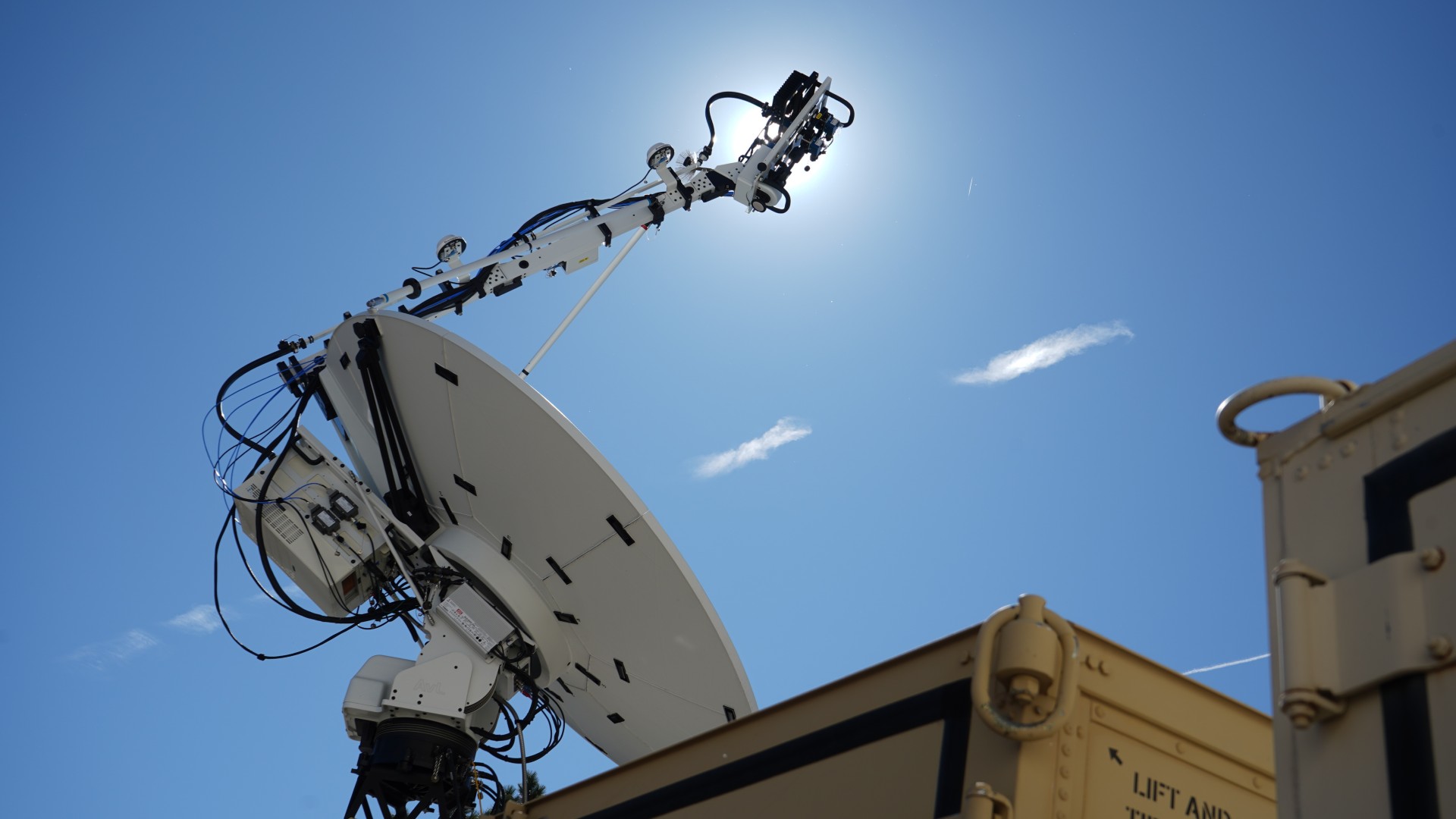Space Force tests small satellite jammer to protect against 'space-enabled' attacks
Such a system could disrupt adversary satellites overhead that might be surveilling or targeting U.S. forces on the ground.

The U.S. Space Force is testing a new ground-based satellite jamming weapon to help keep U.S. military personnel safe from potential "space-enabled" attacks.
The tests were conducted by Space Training and Readiness Command, or STARCOM, which is responsible for educating and training U.S. Space Force personnel. The satellite jammer is known as the Remote Modular Terminal (RMT) and, like other jammers, is designed to deny, degrade, or disrupt communications with satellites overhead, typically through overloading specific portions of the electromagnetic spectrum with interference.
The RMT is "small form-factor system designed to be fielded in large numbers at low-cost and operated remotely" according to Space Force statement. Specifically, the RMT will "unlock the scale to provide counterspace electronic warfare capability to all of the new Space Force components globally," Lt. Col. Gerrit Dalman said in the statement, meaning it can be used from virtually anywhere to deny adversaries the use of satellites orbiting overhead.
Related: US needs new space tech or it 'will lose,' Space Force chief says
Details about the test are scarce, but Space Force's statement explains that two RMT units were installed at separate locations and controlled by a third. The jammer was evaluated according to metrics such as "system latency" and "target engagement accuracy," as well as for how secure its communications were.

The need for new space-based and counterspace technologies has been stressed by Space Force leadership in recent months.
At the Space Foundation's annual Space Symposium in Colorado Springs in April 2024, Chief of Space Operations for the U.S. Space Force Gen. B. Chance Saltzman said the service "must harness the benefits of technological innovation and emerging capabilities if we're going to be able to out-compete our competitors, or Space Force will lose, the Joint Force will lose and the U.S. will lose."
Get the Space.com Newsletter
Breaking space news, the latest updates on rocket launches, skywatching events and more!
The RMT builds on that need for new technologies by providing a satellite jamming system that can be deployed quickly and almost from anywhere. It was developed by the Space Rapid Capabilities Office, a small and unique office tasked with "rapidly delivering first-of-their-kind operational space capabilities" to the U.S. military.
According to a slide deck the Space Rapid Capabilities Office presented to industry in October 2023, these jammers are "small transportable systems that can be emplaced in both garrison and austere environments," meaning they can be used whether infrastructure is present or not.
Ultimately, the system could be presumably deployed and operated in a battlefield-type scenario, disabling or disrupting links to adversary satellites overhead that might be surveilling or targeting U.S. forces on the ground.
Join our Space Forums to keep talking space on the latest missions, night sky and more! And if you have a news tip, correction or comment, let us know at: community@space.com.

Brett is curious about emerging aerospace technologies, alternative launch concepts, military space developments and uncrewed aircraft systems. Brett's work has appeared on Scientific American, The War Zone, Popular Science, the History Channel, Science Discovery and more. Brett has English degrees from Clemson University and the University of North Carolina at Charlotte. In his free time, Brett enjoys skywatching throughout the dark skies of the Appalachian mountains.









